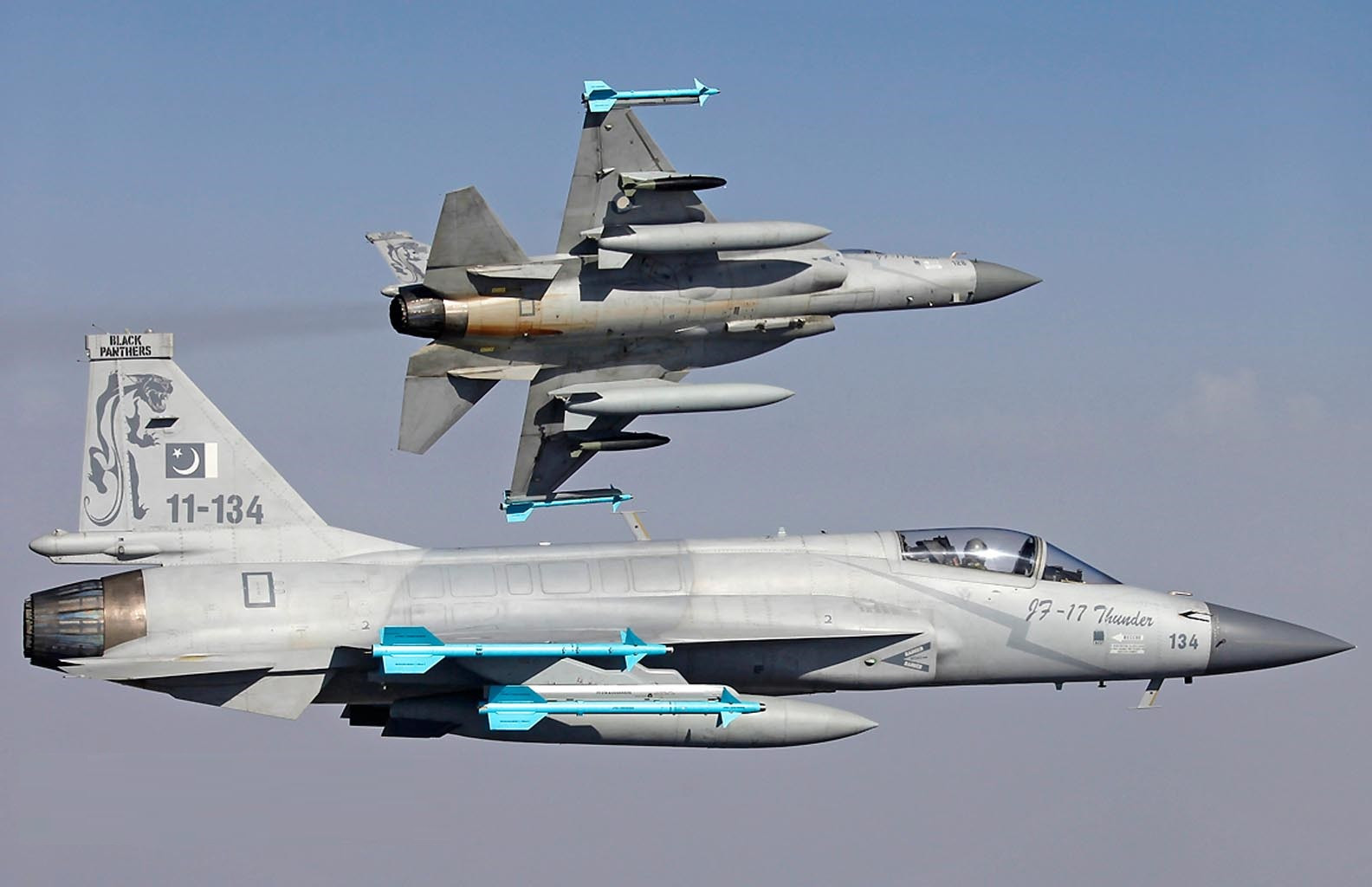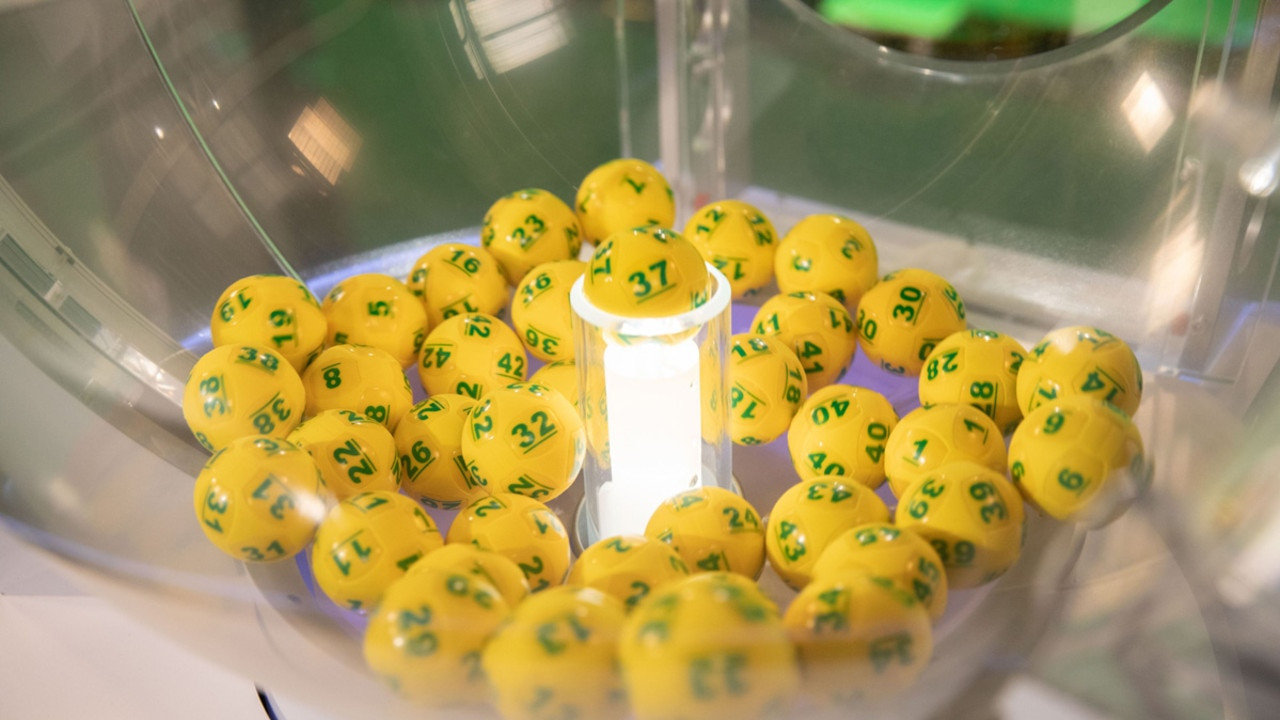The Pakistani Air Force (PAF) is said to be collaborating with its Chinese partners to enhance its JF-17 fighter jet, creating an advanced version, named the JF-17 PFX. Recent information indicates this upgraded model may be notably bigger than the existing JF-17, possibly weighing as much as India’s Tejas MkII, estimated at approximately 17.5 tons.
The abbreviation, ‘PFX’, appears to stand for ‘Pakistan Fighter Experimental’. According to a PAF press release, the JF-17 PFX forms a key component of the PAF’s broader modernization plan for the future. However, the exact details of the JF-17 PFX programme are currently uncertain.
The increase in size and weight of the JF-17 PFX would place it in a different weight category compared to the current JF-17 and Hindustan Aeronautics Limited’s (HAL’s) Tejas Mk1A, both of which have maximum takeoff weights (MTOWs) of around 13,500 kg. HAL’s Tejas MkII represents a significant advancement in capabilities compared to its predecessor and there is speculation that the JF-17 PFX could undergo similar enhancement.
While the PAF has not officially disclosed the specifics of the JF-17 PFX programme, this development indicates its dedication to advancing the JF-17 platform further. If the project delivers the anticipated capabilities, it could usher in a new era for the JF-17, potentially aligning it with other advanced fighter jets in the region and enabling Pakistan to counter India’s forthcoming Tejas MkII.
The Mystery Surrounding The JF-17 PFX
The exact nature of the JF-17 PFX remains veiled in mystery, with official information still pending and numerous uncertainties lingering:
- What specific improvements will be incorporated into the JF-17 PFX?
- Will the JF-17 PFX be solely an upgrade to existing JF-17s or a new production model?
- Will the JF-17 PFX feature advanced capabilities, such as stealth technology, improved sensors, and a more powerful engine?
- What is the anticipated timeline for the JF-17 PFX’s development and deployment?
- How will the JF-17 PFX affect Pakistan’s defence budget and its relations with China?
These questions currently lack definitive answers, but the JF-17 PFX initiative marks a significant advancement in the ongoing evolution of Pakistan’s air capabilities. As more details about this ambitious project come to light, the global community will closely monitor its progress.
The Need For Modernization
Pakistan produces the JF-17 Thunder fighter jet in collaboration with China. The JF-17 is manufactured at the PAC in Kamra, Pakistan. As of now, Pakistan is producing two variants of the JF-17 Thunder fighter jet, which are the Block-I and Block-II versions.
The JF-17 aircraft is said to have an airframe life of 3,000 hours. If the PAF operates each fighter for 150-200 hours annually, the JF-17 could last 15-20 years. The initial Block-Is are expected to turn 20 by 2030, possibly reaching the end of their operational lives.
The PAF faces two choices in this scenario:
- Acquire new fighter jets. The PAF could opt to purchase new fighters from other countries. This would require significant investment and potentially involve complex negotiations with foreign suppliers.
- Upgrade existing JF-17s. The PAF could choose to upgrade its existing JF-17 fleet, extending their service life and improving their capabilities. This option could be more cost-effective than purchasing new aircraft, but it would still require significant investment in research and development.
If not for limited funding, the PAF may consider purchasing a significant quantity of J-10CE and/or J-31 aircraft to substitute the Block-Is. However, due to Pakistan’s enduring economic challenges, this scenario is improbable, particularly because the JF-17 forms the majority of the PAF’s versatile fighter fleet. It is improbable that larger aircraft, especially twin-engine models, such as the J-31, could realistically replace the JF-17.
Therefore, the answer to the ageing JF-17s lies within the JF-17, itself. The introduction of the ‘JF-17 PFX’ may serve as the initial move in addressing the end-of-life challenges faced by the JF-17.
A Plan For Self-Reliance
To begin with, a comprehensive strategy could be developed to enhance the older JF-17s in the PAF, specifically the Block-Is and Block-IIs. This plan would focus on prolonging the aircraft’s lifespan and improving its overall capabilities. Initially, the PAF could prioritize the internal integration of sensors, electronics and weapons systems within the country.
By establishing this capability, the PAF would be able to tailor the JF-17 according to its preferred specifications instead of being constrained by limited choices. In fact, the PAF’s inability to conduct integration tasks independently led to its reliance solely on Chinese AESA radar solutions.
The JF-17 PFX is anticipated to tackle this challenge and bring the JF-17 closer to its original objective of becoming an autonomous fighter free from external influences. This could lead the PAF to consider incorporating subsystems from Turkey, Europe and local sources to enhance the JF-17’s capabilities.
The Potential For Full Production
The current promotional material indicates that the JF-17 PFX could pave the way for a new upgrade path for the JF-17, or signal a transition towards full in-house production of the JF-17 at the Pakistan Aeronautical Complex (PAC). The PAC currently manufactures 58% of the JF-17’s airframe, with the remaining 42% supplied by Aviation Industry Corporation of China (AVIC), a well-known aerospace and defence company.
However, the future viability of the JF-17 PFX depends on the PAF’s capacity to achieve complete fighter production at the PAC. If AVIC discontinues production, the PAF may encounter challenges in maintaining the JF-17’s lifecycle or creating new aircraft due to a shortage of crucial resources. The PAF could potentially face difficulties in sustaining its existing fleet if it loses access to specific spare parts from AVIC.
Furthermore, AVIC may have a stronger incentive to promote the J-10CE for international sales, potentially affecting the support for the JF-17 programme. The J-10CE enjoys cost advantages due to higher production volumes within China. It is also a highly advanced and capable aircraft, at par with the latest versions of the F-16 fighter jets. The J-10CE is a Chinese aircraft manufactured by AVIC.
AVIC may not be very keen on continuing with the JF-17 programme, especially considering they already have the high-performance J-10CE fighter in their portfolio. It is likely that AVIC sees investing in upgrading the JF-17 as a less efficient use of their resources compared to focusing on the J-10CE and J-31 aircraft.
Therefore, there is a possibility that the PAF will take over the JF-17 programme from AVIC. AVIC may not be significantly impacted as the PAF intends to purchase J-10CEs and J-31s for its needs. Additionally, the JF-17 caters to specific requirements, so it is improbable that it would compete with AVIC’s export initiatives.
For the JF-17 PFX to be a sustainable solution, the PAC must undertake full-scale production of the JF-17. While this may involve significant costs, it would be more cost-effective than transitioning to an entirely new fighter design. This approach would prolong the use of current facilities and tap into existing knowledge and skills.
A Path To Self-Sufficiency
The PAF’s efforts to enhance its understanding of the JF-17 to enable full customization indicate that turnkey production is being considered. This would lead to a genuine ‘Made in Pakistan’ JF-17, free from reliance on AVIC and offering extensive options for configuration and customization.
The JF-17 PFX would not only offer the PAF a cost-effective fighter that can be procured in large numbers to replace the older JF-17s, but also enable complete control over marketing and export of the aircraft. While Pakistan’s financial and industrial limitations may pose challenges, the primary focus would be on utilizing the fighter rather than selling it to other countries.
The PAF should aim to have a self-sufficient fighter aircraft that can be relied upon instead of depending upon imports. Adopting a turnkey approach to the JF-17 PFX could lay the groundwork for Pakistan to enhance its aerospace capabilities. By taking full ownership of the JF-17 design, the PAF, through the PAC and National Aerospace Science and Technology Park (NASTP), can develop a comprehensive understanding of the aircraft and initiate further advancement programmes.
Potential initiatives may involve expanding the design, utilizing more composite materials, creating essential components, such as a flight control system, and upgrading the turbofan engine, similar to the Gripen E/F and Tejas Mk2. The insights acquired from these efforts could be utilized in future to design and produce an authentic ‘Made in Pakistan’ next-generation fighter aircraft (NGFA).
















